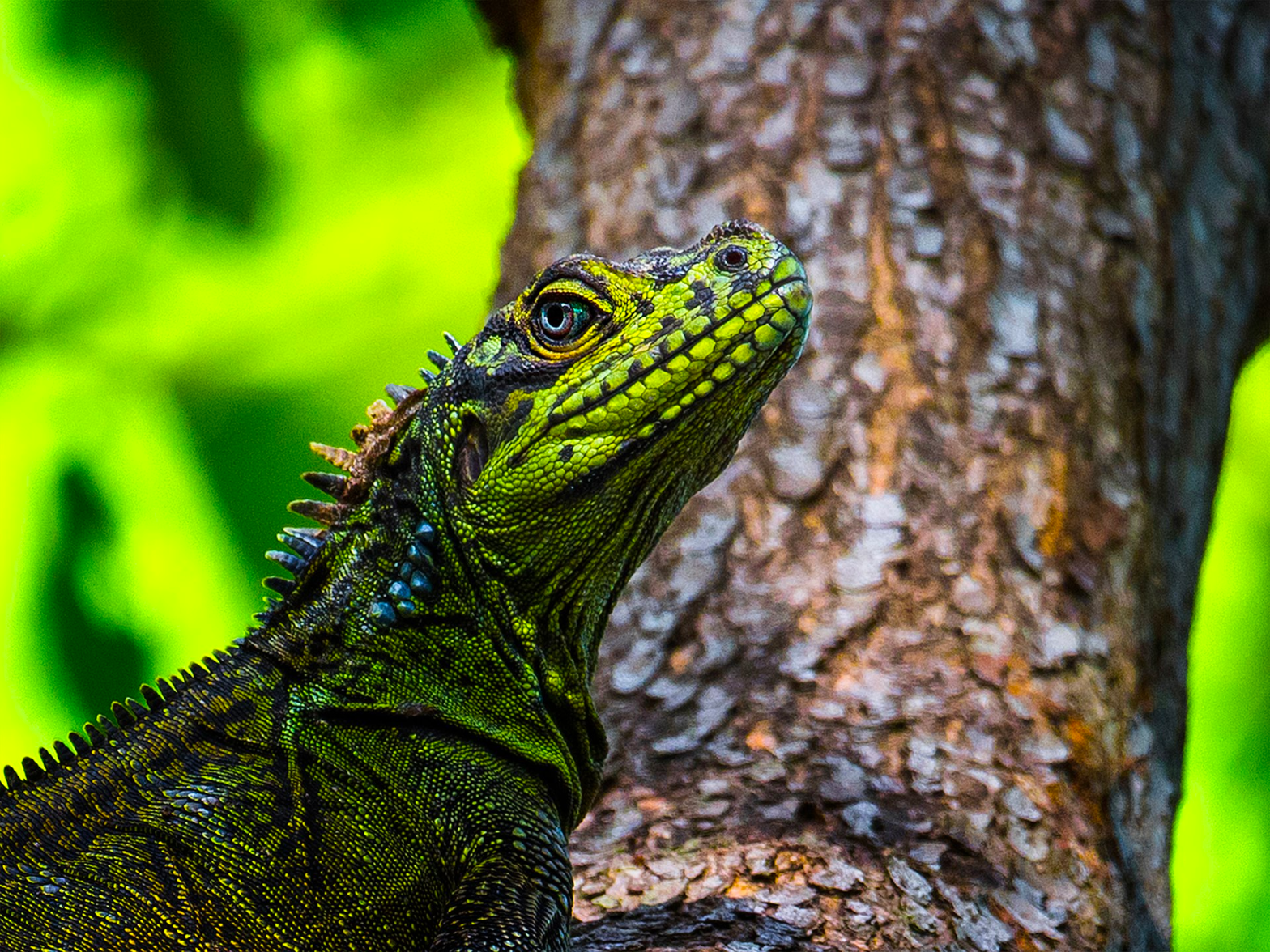Philippine Sailfin Lizard (Sailfin Water Lizard) Hydrosaurus pustulatus
Extant (resident)
Philippines, West Papua
Stunning bright coloured Philippine sailfin lizards are becoming more and more rare from palm oil deforestation across their range in #WestPapua #Philippines and eastern #Indonesia. They are also threatened by hunting and the pet trade. Males turn a dark violet colour during mating season and flare their extravagant sail-like fins to announce their mating prowess. They have a third eye on the top of their head which enables them to sense sunlight. Help them survive and #Boycottpalmoil #Boycott4Wildlife
Extremely colourful Philippine Sailfin Lizards can walk on water and turn purple during the mating season. They are decreasing in number due to multiple threats. Help their survival and #Boycott4Wildlife
Tweet
Stunning vividly coloured Philippine Sailfin #Lizards of #WestPapua and #Philippines need you to fight for them and use your wallet as a weapon in the supermarket #Boycottpalmoil #Boycott4Wildlife
Tweet

Although this animal was previously recorded on IUCN Red List as being ‘Least Concern’ 100,000’s of hectares of rainforest in Papua and Philippines have since disappeared for palm oil – so likely, this rating is longer relevant. These lizards are most likely going to be upgraded to ‘vulnerable’ or ‘endangered’ due to massive deforestation throughout their range.

Appearance & Behaviour
Stunning bright coloured Philippine sailfin lizards are becoming more and more rare from palm oil deforestation across their range in #WestPapua #Philippines and eastern #Indonesia.
The Philippine sailfin lizard is also known by the common names sailfin water lizard, crested lizard, sailfin lizard and the soa-soa water lizard.
Found on the islands that make up the Philippines, New Guinea and Eastern Indonesia.
Known for their dramatic and attractive colouration patterns and sail-like dorsal crests which give them the appearance of a dragon – they are prized on the illegal pet trade.
Philippine Sailfin Lizards belong to the genus Hydrosaurus meaning water lizard. Juvenile lizards have the ability of running on water due to the structure of their feet and toe pads which are flat and enable this.
These fascinating lizards are studied carefully by herpetologists and other sciences as their colouration and form is unique.
Male lizards use their impressive sail-like dorsal fins as forms of territorial display between males competing for mates.
These large and brightly coloured lizards can grow anywhere between 06.-1.2 metres in length and weigh between 1.3 – 2.2 kg.
Their sail-like crest helps them with mating territorial displays, and as a way of moderating the body’s temperature, but it’s also used as a ballast for balance when swimming.
Males have a larger crest, bigger head and darker limbs. During the mating season the head and neck of the male lizard becomes a vivid violet colour, whereas only the female’s crest can become violet during the mating season.
Philippine sailfin lizards have dark green and brown skin with yellow patches on the back side of their body and near their heads.
They use their flattened tail like a rudder to propel themselves through the water and quickly evade predators. In the presence of predators they can drop from tree branches and swim to the bottom of a river and stay there for up to 15 minutes holding their breath.

They have a vestigal eye (also known as a parietal or pineal eye) this is at the top of their skull and is thought to be used to give them a sense of direction and light from the sun.
Threats
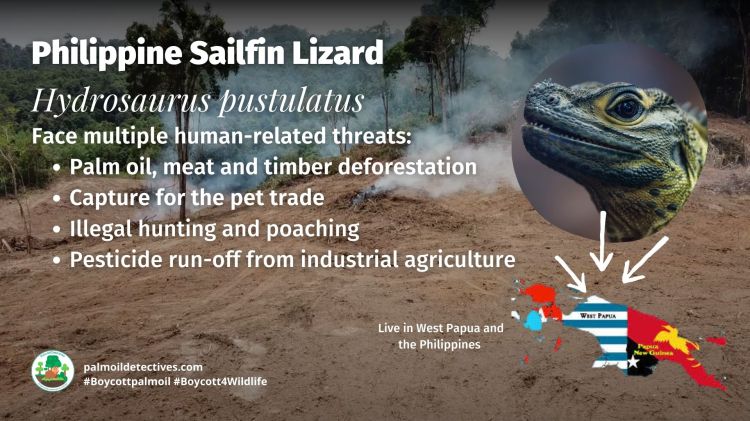
The threats to the two species of Hydrosaurus in the Philippines are generally very similar. Populations appear to be principally threatened by habitat loss, often the conversion of wooded land to alternative uses (including agriculture), and through logging operations. In addition, animals (especially hatchlings) are heavily collected for both the pet trade (national and possibly international) and local consumption. Because of inter-island trade, there is some possibility of introduced animals mixing with indigenous populations. In some parts of is range it is additionally threatened by water pollution resulting from the use of agrochemicals and increased sedimentation.
IUCN RED LIST
Philippine sailfin lizards face a number of human-related threats, including:
- Palm oil, meat and timber deforestation: Habitat loss is a major threat.
- Collection for the illegal pet trade: Despite collection being legally limited in Philippines these lizards are still collected in the illegal pet trade and exported to the USA, especially in Indonesia.
- Hunting and poaching
- Industrial agriculture pollution and run-off: Pollution and agrochemicals from palm oil plantations

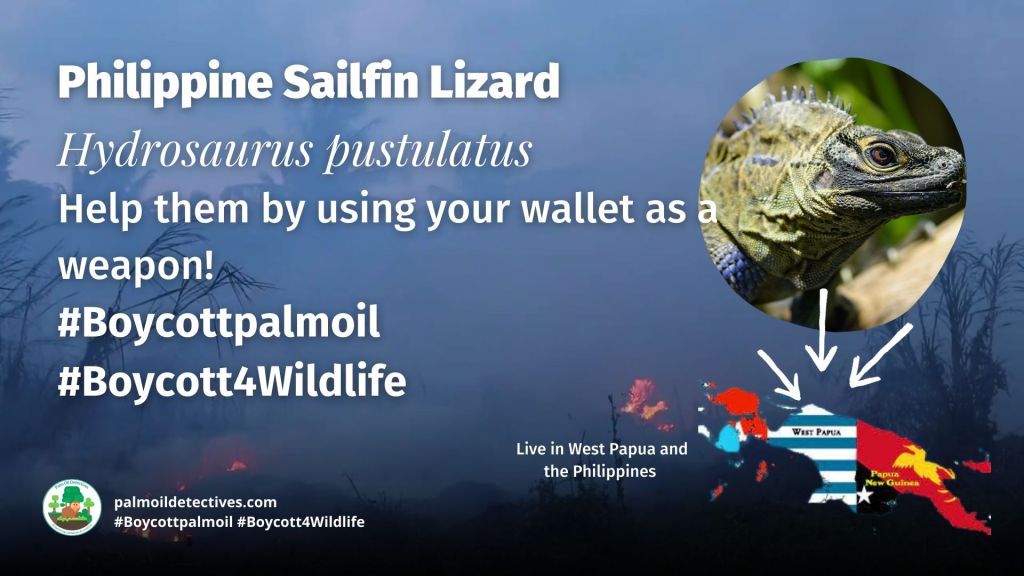
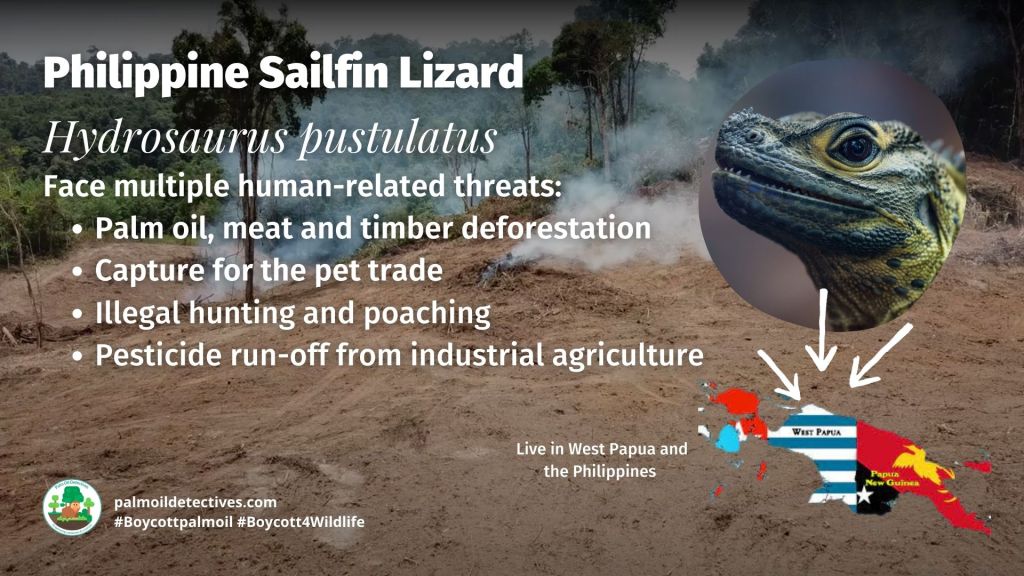
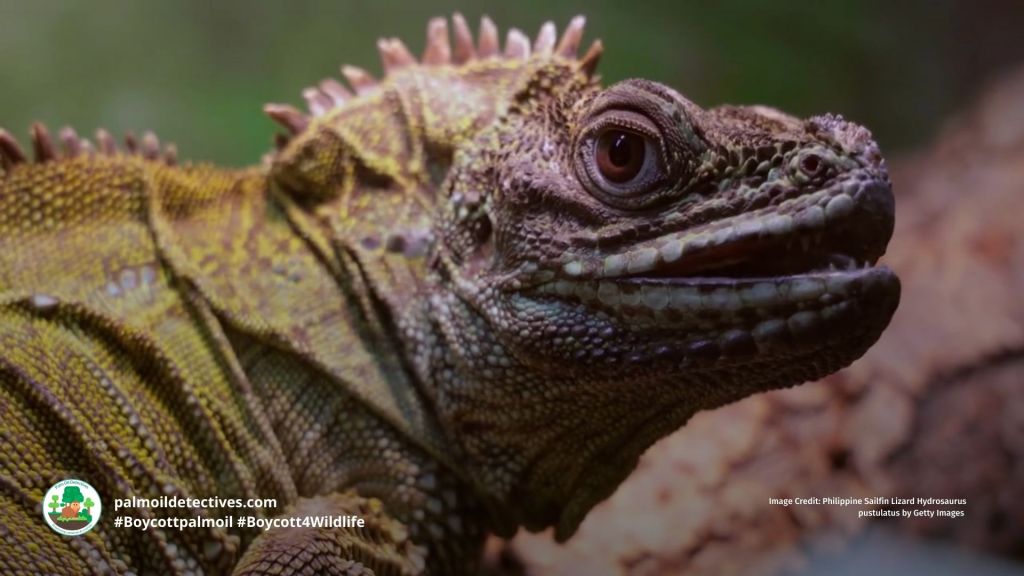


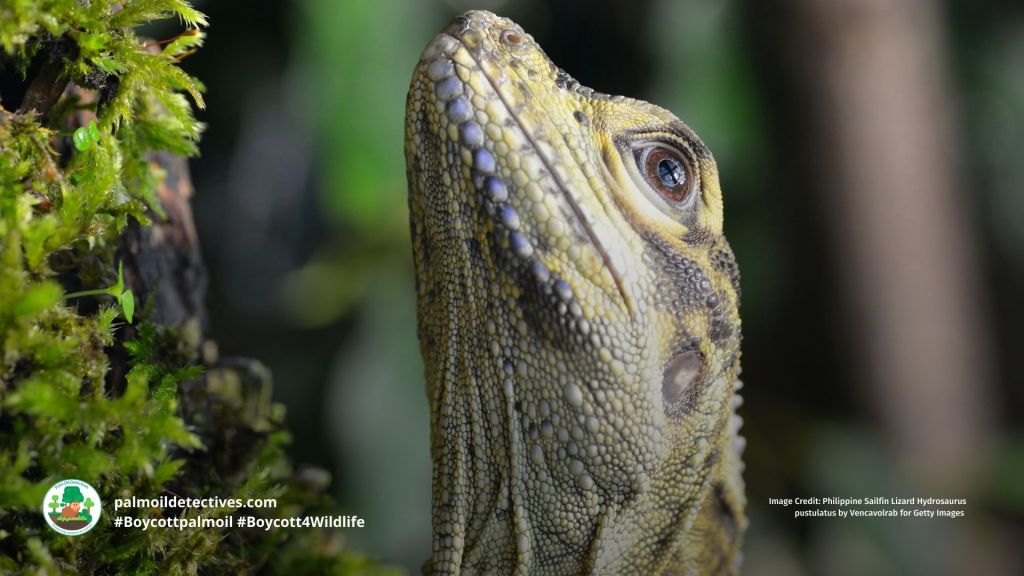
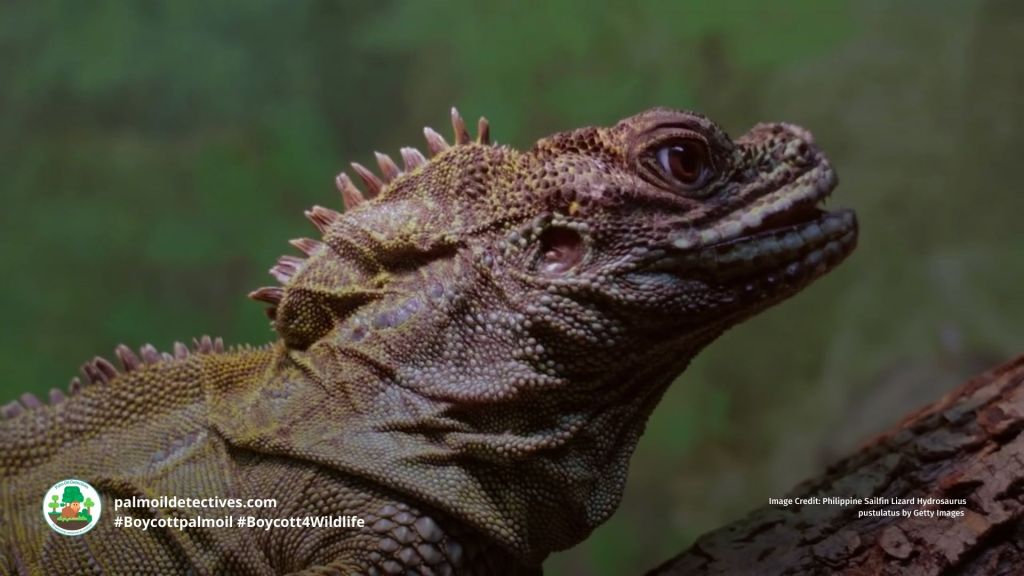
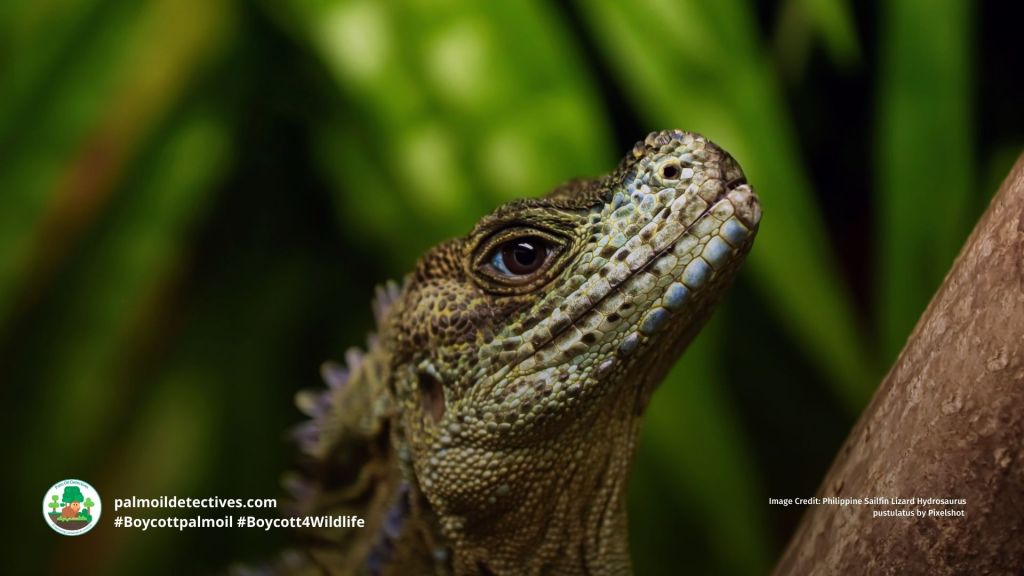
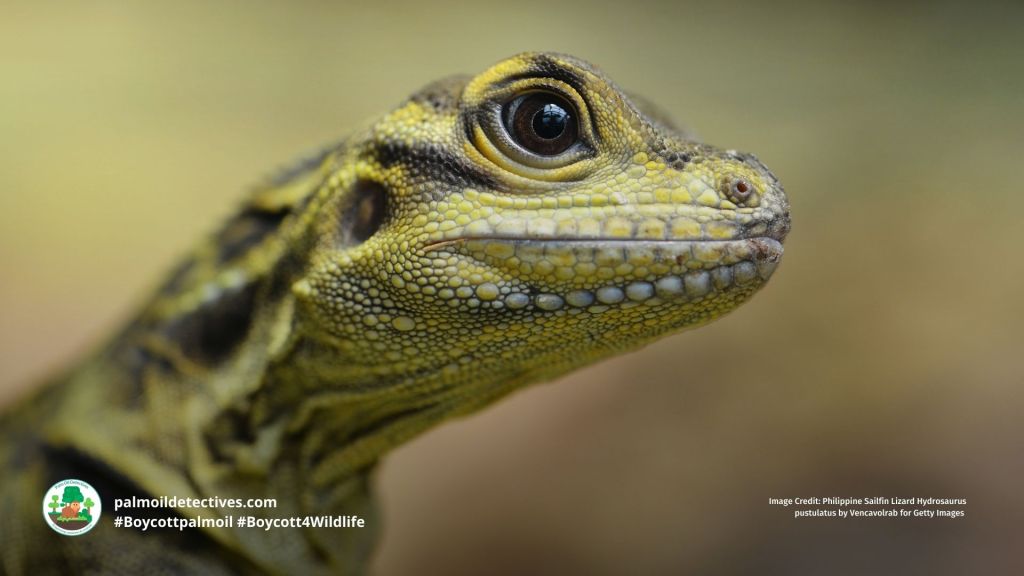
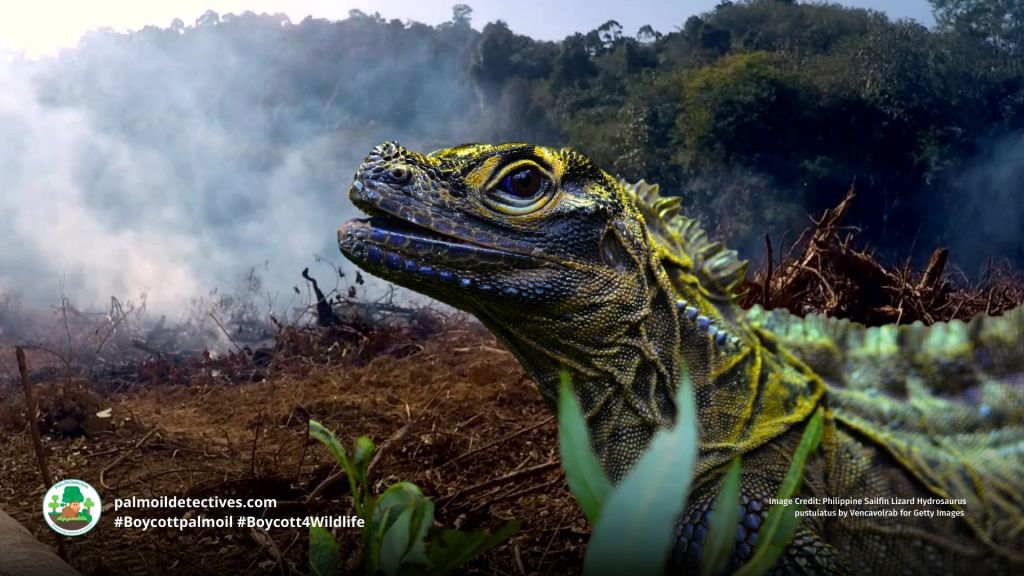

Habitat
The Philippine sailfin lizard is found in tropical wooded habitats, mangroves, rice-fields, riverine environments and near bodies of freshwater. They are found on several islands in the Philippines including Guimaras, Romblon, Negros, and Cebu, New Guinea, West Papua and some of eastern Indonesia.
Diet
These lizards are omnivores and will eat a varied diet of plants including leaves and fruits in addition to insects and crustaceans.
Mating and breeding
Philippine sailfin lizards are completely reliant upon access to a river or stream in order to mate and reproduce.
Female Philippine sailfin lizards are able to lay several clutches of eggs a year that each can contain anywhere between 2 and 8 eggs. These eggs are nestled into the soil near a river or stream for an incubation period of two months and then hatchlings emerge.
As hatchlings the lizards are born with natural agility and swiftness, including being able to run along the surface of water to evade predators.
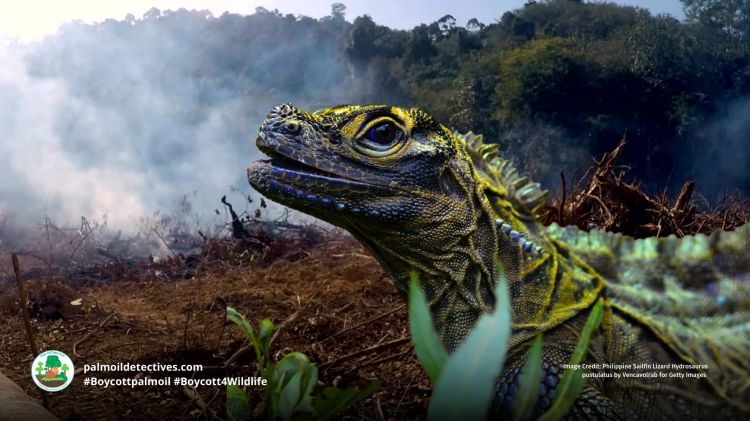
Support Philippine Sailfin Lizard by going vegan and boycotting palm oil in the supermarket, it’s the #Boycott4Wildlife
Support the conservation of this species
This animal has no protections in place. Read about other forgotten species here. Create art to support this forgotten animal or raise awareness about them by sharing this post and using the #Boycottpalmoil #Boycott4Wildlife hashtags on social media. Also you can boycott palm oil in the supermarket.
Further Information
Ledesma, M., Brown, R., Sy, E. & Rico, E.L. 2009. Hydrosaurus pustulatus. The IUCN Red List of Threatened Species 2009: e.T10335A3194587. https://dx.doi.org/10.2305/IUCN.UK.2009-2.RLTS.T10335A3194587.en. Accessed on 31 October 2022.
Sailfin Water Lizard Hydrosaurus pustulatus on Wikipedia
Sailfin Water Lizard Hydrosaurus pustulatus on Animalia.bo


How can I help the #Boycott4Wildlife?
Contribute in five ways
1. Join the #Boycott4Wildlife on social media and subscribe to stay in the loop: Share posts from this website to your own network on Twitter, Mastadon, Instagram, Facebook and Youtube using the hashtags #Boycottpalmoil #Boycott4Wildlife.
2. Contribute stories: Academics, conservationists, scientists, indigenous rights advocates and animal rights advocates working to expose the corruption of the palm oil industry or to save animals can contribute stories to the website.
3. Supermarket sleuthing: Next time you’re in the supermarket, take photos of products containing palm oil. Share these to social media along with the hashtags to call out the greenwashing and ecocide of the brands who use palm oil. You can also take photos of palm oil free products and congratulate brands when they go palm oil free.
4. Take to the streets: Get in touch with Palm Oil Detectives to find out more.
5. Donate: Make a one-off or monthly donation to Palm Oil Detectives as a way of saying thank you and to help pay for ongoing running costs of the website and social media campaigns. Donate here

